Field Testing the Halios Seaforth in Roatán, Honduras
By: Alexander Van Slyke
For two weeks, beginning in late July and into August, I was in Roatán, Honduras with a small cohort of fellow classmates from the University of Michigan-Flint’s Doctor of Physical Therapy Program. In short, we were there to not only provide physical therapy services to patients within the community, but also to educate and to provide tools and equipment to both caregivers and healthcare personnel in attempt to make a lasting impact on the level of care provided to patients on the island.
I had decided long ago, as a watch nerd does, to bring only one watch and one strap along for the trip. For someone that changes watches and straps so constantly, this was both a personal test and another measure taken to avoid any distraction from therapy while on the island. This meant the watch would be putting up with long work days in therapy clinics (often times without air conditioning), 90 (F) degree average temperatures with high levels of humidity, and a great deal of sand, sweat, salt water, sunscreen, and bug repellent. Arriving at my apartment just a week before departure, the Halios Seaforth was a perfect candidate for the test, and was paired with a ToxicNATOs Magnum strap throughout my trip.
Halios Watches is a company that has made a big name for itself in the world of affordable microbrand watches. After being a fan from afar for the past few years since I was first introduced to the company, I flipped a watch earlier this year in order to get in on the much-anticipated Seaforth release. The customization aspect of this release left me with a very tough decision, and months of back-and-forth lead me to the blue sunburst dial with the stainless steel 12-hour bezel. I simply loved both the added functionality and the sport watch vibe of the 12-hour bezel versus the diving bezel. While I was well aware of the impressive level of design that goes into each Halios watch, I was even more impressed with the Seaforth in the metal.
The Case:
The watch comes in at a diameter of 41mm, and I was pleasantly surprised to find that the bezel itself is 41mm, while the body of the case is slightly smaller than the listed 41mm, allowing for very simple use of the 120-click unidirectional rotating bezel. The 6mm x 4mm screw-down crown is a great size and has deep grooves, making time-setting a breeze. I’ve always enjoyed the fact that Halios uses its logo as branding for the crown, as the symmetry of the three crescent moons means it looks great no matter what position the crown screws into.
The lug width is then 20mm, which I much prefer to 22mm (being a smaller guy who enjoys wearing thinner straps). Case thickness comes in at 12mm, while a few millimeters of that thickness comes from the vintage-style box sapphire crystal that sits high above the dial (the height of the box crystal seen in profile view actually depends on the bezel option chosen, as the fixed bezel shows the crystal the most, while the sapphire bezel shows the crystal the least, leaving the stainless steel bezel that I chose right between those two).
Finishing off the dimensions, the lug-to-lug length is 47mm, which is one of my favorite aspects of the case design, as it allows the watch to be worn on a number of different wrist sizes. The caseback of the Seaforth is a solid, brushed piece of stainless steel that screws into the case, and includes only the essentials – you’ll find the name of the watch, 200m water resistance, the serial number of your watch, and the word “automatic.”
I am proud to say that after initially deciding to let the caseback sticker come off naturally over time, I removed it due to the presence of salt under the sticker following a few hours in the ocean – officially breaking the watch in about mid-trip. After wearing the watch consistently for two weeks, I was very impressed with how well it wore on my 6.25in wrist. While paired with the Toxic Magnum strap, it was light and unobtrusive. I only noticed it when I needed to check the time for myself or for my classmates, which I personally find to be a positive trait in a watch. The thick, short lugs angle down and hug the wrist, allowing the lug-to-lug length to feel even smaller than the true specs suggest. While this may initially deter those interested in larger watches, razor sharp lines and contrasting finishing on the lugs create a very visually striking design, leading to a great deal of presence on the wrist without any added heft.
That said, if you are looking for a large, hefty dive watch, this simply might not be the one for you. The ToxicNATOs strap definitely deserves some love here as well, as it is extremely well made, light and breathable, is very affordable (especially compared to the competition for a rubber strap similar to this one), and comes equipped with the impressive Toxic hardware that the watch community has come to love. The strap had a lot to do with keeping the wearing experience light, dry, and comfortable in the environment I was in.
The Dial:
In terms of legibility, the Seaforth shines due to the reserved layout of the dial. I avoid the use of the term “simple” because of the level of detail utilized in order to manufacture such a refined sport watch feel. The sunburst blue moves between a deep navy and a bright blue/teal color based on lighting, and I very much enjoyed seeing a unique shade each time I glanced at the watch. The applied rectangular markers at each hour provide visual depth in the dial, and offer space for the placement of a great deal of C3 SuperLuminova. The lume glowed bright into the night after long days in the intense sun, and it was still visible on the wrist during our early mornings.
While my position on the great date/no date debate is very much based on whether the date meshes well with the remainder of the dial, I prefer the lack of a date here due to the perfect symmetry of the nearly-sterile dial layout. Personally, I also respect the fact that Halios chose to save “200m” for the caseback, as I feel that the wide-open space above 6 o’clock suits the overall design ethos better than the inclusion of such text on the dial. The word “automatic” is written in small font and split on each side of the 6 o’clock marker, an inclusion that I feel neither adds to or takes away from the cohesiveness of the dial.
Legibility was great in all lighting from start to finish, including the few hours spent snorkeling both during the day and while at night with a torch. There was no decrease in the clarity of the dial while under water aside from the mirror-like appearance present at harsh angles that plagues watches not equipped with specific technologies to avoid this effect (Check out dive offerings from Ressence and Hydro-equipped Sinn watches if you’d like to nerd out on that). Even when the glow of the lume wore out while snorkeling at night, the reflection of the polished material on the hands and the indices made time telling surprisingly clear, utilizing only the residual lighting from other torches in the group.
The Bezel:
I particularly enjoyed the utilization of the 12-hour bezel during my trip, as I was able to keep track of the time in both Honduras and at home in Michigan. I am a lover of dual-time watches, and the simplicity of a 12-hour bezel is something that I almost prefer to a GMT function; although the added functionality and mechanical complication of a true GMT keeps me very much interested. The action of the bezel itself is phenomenal. After setting the bezel to a specific location, there is a fraction- of-a-millimeter movement clockwise to set itself into the teeth of the unidirectional mechanism. From that point there is zero play, or wiggle, until it is moved once again.
Similar to the crown, utilization of the bezel has almost an aggressive feel with deep grooves that allow for quick and easy gripping. I appreciate the inclusion of a lumed pip at the 12 spot on the bezel. This also allowed me to keep track of the amount of time spent with my patients while in the clinic, knowing that I simply had to reset the bezel to local time following a treatment session in order to keep track of time. I had the time directly on the dial set to my home time in Michigan, UTC-4, and the adjustment for the local time, UTC-6, was done through the use of the bezel.
The Movement:
While I do not generally track the accuracy of my watches closely, I made a point of doing so while on the trip. The watch was set prior to leaving and left to run for the entirety of my time on the island. While I expected the timing to be within the accepted specifications, I was surprised to see that the watch actually ran at 3s/day, well under accepted daily deviations for this movement. It is important to note that this long-term time test was done while wearing the watch every minute of every day that I was on the trip. Most mechanical movements will show differing accuracy depending on the amount of time on wrist versus time spent sitting in the watch box.
This is my first time owning a watch that utilizes a Miyota. I had no worries about doing so, as I have heard a great deal about the workhorse nature of these movements (similar to that of an ETA 2824). The specific caliber used in the Seaforth is the Miyota 90S5, which is the no-date version of the 9015 (props to Halios for sourcing the no-date version and avoiding the presence of a middle crown setting without a function, something that can happen when a movement with a date function is placed under a dial without a date window). I may be in the minority, but I actually prefer to own a more ubiquitous movement due to the added benefits of low servicing costs and the fact that most watchmakers have been trained in servicing movements such as the 9015/90S5 and the ETA 2824. I am not shy about using my watches for active hobbies or adventures such as this, and it is comforting to know that any potential needs for servicing will be at a reasonable cost.
Final Thoughts:
Overall, the watch performed extremely well throughout my trip. It easily stood up to a great deal of vibration with patient handling in the clinic as well as a very hot and humid Roatán environment, consistent application of sunscreen, bug spray, and hours of snorkeling and swimming (not to mention staying on wrist for a couple of Rum Runners on days off). The Seaforth can clearly take a bit more of a beating than it experienced with me in Honduras, coming away with no more than a few very small scratches. As it was the only thing that was with me throughout the entirety of my trip, it will be a very welcomed reminder of an incredible experience spent working with some really amazing people. My favorite aspect of this hobby is the story behind where a watch has been – a wedding, a graduation, a meaningful trip – and it just so happens that this one’s story started out with a bang!

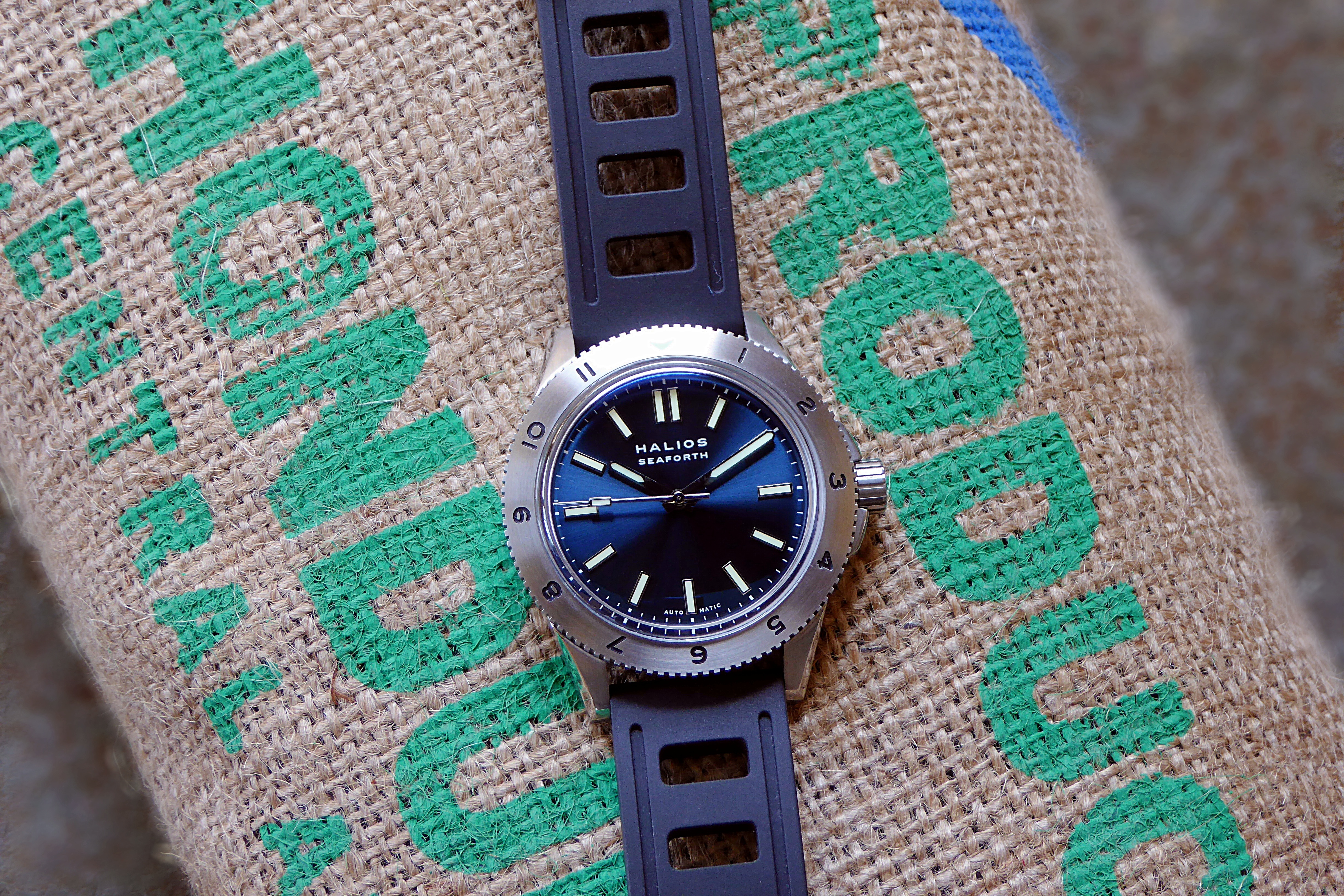

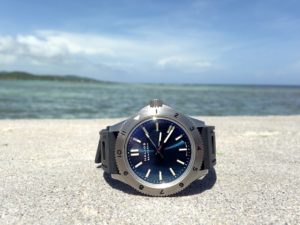
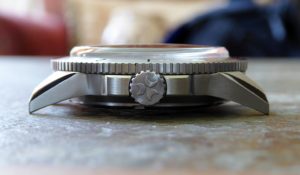
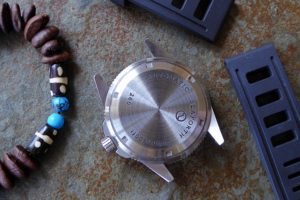
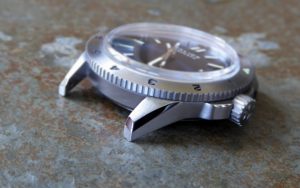
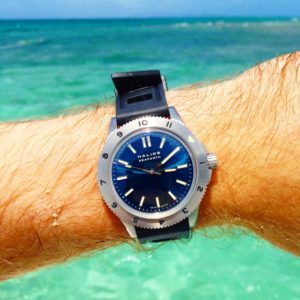
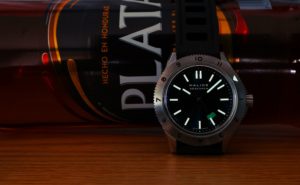
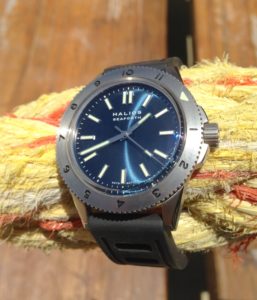
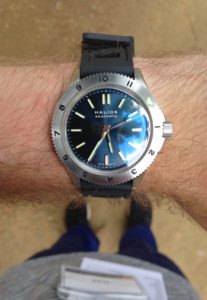
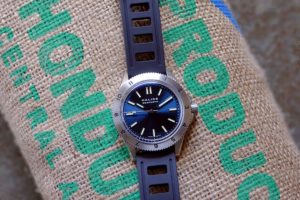
Fantastic review
Well done for the writing and well done Halios (??)
Killer review Alex, not to mention that is super cool of you to go and help out in Honduras.
Great review and killer job volunteering to help out in Honduras!!
Thanks guys, I really appreciate the support! As far as the service in Honduras goes, the pleasure was all mine. It really was an amazing experience. The care that we provided is in serious need on the island, and being able to provide the members of the community with information and care was very fulfilling. I am hoping to get back to the island within the next few years to provide some more assistance, as the access to health-related information and care on the island remains far too low. Glad to hear you enjoyed the article!.